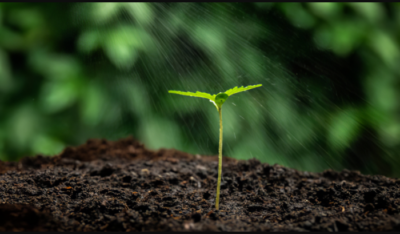Cannabis cultivation can be a rewarding and therapeutic hobby, but it comes with its fair share of challenges. One of the most critical aspects of nurturing healthy cannabis plants is proper watering. Overwatering and underwatering can both wreak havoc on your crop, so it’s essential to understand the ins and outs of watering techniques. In this guide, we will walk you through the steps to ensure you’re giving your cannabis plants the right amount of water for optimal growth.
Table of Contents
Understanding the Watering Basics
Water is one of the essential elements for cannabis growth. It serves as a conduit for nutrients, helps maintain turgidity in plant cells, and regulates temperature. However, too much or too little water can disrupt these vital functions.
Before delving into the practical aspects of watering, it’s essential to understand why water is crucial for your cannabis plants. Water helps deliver essential nutrients to the root system, facilitating photosynthesis and overall plant health. Adequate hydration also helps maintain proper cell structure and temperature regulation.
Preparing for Cannabis Watering
Soil and Pot Selection: Start by choosing the right soil mix or potting medium for your cannabis plants. A well-draining mix is essential to prevent waterlogged roots. Select pots or containers with drainage holes to allow excess water to escape.
Water Quality: Use clean, pH-balanced water for watering your cannabis plants. The ideal pH range for cannabis is generally between 6.0 and 6.5. If you’re using tap water, consider dechlorinating it or using a water filter to remove impurities.
Moisture Level Check: Before watering, check the moisture level of the potting mix by inserting your finger about an inch into the soil. If it feels dry at that depth, it’s typically time to water.
Watering Techniques
Do not stick to a strict watering schedule. Cannabis plants have different needs based on various factors, so it’s better to water when the plant requires it. Smaller pots and dryer environmental conditions may necessitate more frequent watering.
Ensure that your pots or containers have proper drainage. Elevate them slightly or place them on saucers to prevent water from accumulating at the bottom of the pot, which can suffocate the roots.
Water your cannabis plants thoroughly but gently. Water until you see a bit of runoff coming from the drainage holes. This ensures that the entire root zone is adequately hydrated while preventing waterlogged conditions.
Monitoring Your Cannabis Plants
Keep a close eye on your cannabis plants and monitor how they respond to watering. Signs of overwatering include drooping leaves, yellowing, and slow growth. Underwatered plants may have drooping, dry leaves. Adjust your watering routine based on these cues. Let’s delve deeper into the signs of underwatering and overwatering in plants
Underwatering Signs
When a plant is underwatered, it often displays clear indications of stress. The most noticeable sign is wilting. The leaves and stems may droop and appear limp, lacking their usual turgidity. You might notice that the plant’s leaves feel dry and crisp to the touch. They can become brittle, and in some cases, they may curl up at the edges. As the plant struggles to access water and nutrients, the leaves may also start to turn yellow, often starting at the tips and edges. Additionally, the growth of the plant can be significantly slowed down, and it might not produce new leaves or branches as it should. In severe cases, underwatered plants may shed leaves as a survival mechanism to reduce water loss.
Overwatering Signs
Overwatering can be just as detrimental to plants as underwatering. When a plant is overwatered, it may exhibit signs of stress, including wilting. However, the wilting in overwatered plants is often accompanied by a sense of heaviness and limpness. The leaves and stems may droop, but they won’t feel as dry and crisp as in underwatered plants. Instead, they may feel soft and appear somewhat swollen. Overwatered plants can also develop yellowing leaves, typically starting in the lower part of the plant. This yellowing is often a result of nutrient deficiencies caused by poor root health due to waterlogged soil. In addition to these symptoms, you may observe mold, mildew, or fungal growth on the soil surface, as overwatered conditions create a favorable environment for these issues. In severe cases, overwatering can lead to root rot, where the roots become brown, mushy, and emit a foul odor. Poor soil drainage, evident as excessive runoff from the bottom of the pot or container after watering, is a clear sign of overwatering.
Understand that watering needs change during different growth stages. Seedlings and young plants may require less water, while mature plants in the flowering stage may need more. Tailor your watering practices accordingly.
Adapting to Environmental Factors
Be aware of environmental factors such as temperature and humidity. Hot and dry conditions can lead to quicker moisture evaporation and may necessitate more frequent watering.
If you’re using nutrient solutions, follow the manufacturer’s recommendations for dilution and feeding schedules. Overfeeding can harm your plants.
Keeping a Gardening Journal
Lastly, consider maintaining a gardening journal to track your watering practices and your cannabis plants’ responses. This record can be invaluable for refining your watering routine over time, especially if you’re growing different strains or in various conditions.
Conclusion
Properly watering cannabis plants is a skill that every grower should master. It’s a fundamental aspect of cannabis cultivation that directly impacts plant health and yields. By following the guidelines outlined in this article and paying attention to your plants’ specific needs, you’ll be well on your way to nurturing thriving cannabis plants and reaping a bountiful harvest. Remember that practice and observation are key to becoming a successful cannabis cultivator, so keep learning and adapting to your plants’ unique requirements. If you’re looking for additional information on how to water and grow your plants, as well as high-quality cannabis seeds, Herbies is your trusted source. Happy growing!








Comments on " How to Properly Water Cannabis Plants for Optimal Growth" :